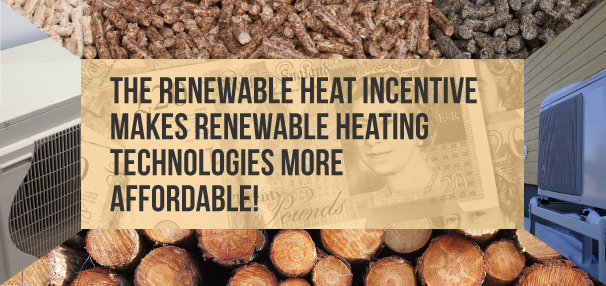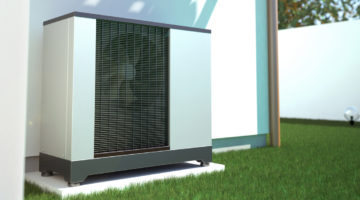
In the blog below we highlight two ways you can take maximum advantage of the Domestic RHI that is due to launch in the Spring.
Maximising the RHI payments from Heat Pumps
So if you are reading this, you are probably aware that the Renewable Heat Incentive is launching imminently. Now, for heat pumps, the key to them working efficiently is that they operate in really well insulated homes, since they produce water at far lower temperatures than traditional central heating temperatures.
To be eligible for any RHI payment, you will first need to get a Green Deal Assessment / EPC.
When they are trying to assess the RHI payment you will be eligible for, they will take the heat demand number right at the bottom of the EPC (found at the bottom of page 4 as in the picture below). The higher the number, the more money you will be paid via the RHI and remember it is the combination of the space heating and water heating that will be used.
This essentially means that the less insulated your home, the more single glazing you have, the older your property (on the whole) will result on higher RHI payments when you install either a ground source or air source heat pump.
Now one of the pre-requisites to getting the RHI, is that if either loft insulation and cavity wall insulation come up as a recommendation on the EPC, these need to get done before you become eligible. However, aside from that, you actually want your house to have a high heat loss so the number at the bottom of the EPC is higher – so if you are thinking of changing you windows or installing solid wall insulation at the same time, you should get the heat pump installed and commissioned before you install these other measures.
Obviously this contradicts what I said about heat pumps operating in really well insulated homes, but truth be told, lock in the high payments, get the heat pump installed and then make the house more efficient.
If your EPC mentions cavity or loft you will need to get them done, but that is it, do not get anything else done until after the heat pump has been installed and you are receiving the RHI. It is the same principle for both ground source and air source heat pumps.
Biomass RHI payments are based on the same premise of heat demand as the basis for the payment, so again the more difficult it is to heat, the more money you will receive through the renewable heat incentive.
Maximising RHI from Solar Thermal
The RHI calculation from solar thermal is more complicated than for any of the other technologies included in the RHI scheme. The main reason is that the MCS approved solar thermal installer will deem the RHI payment for the system, however there is one absolutely key thing to bear in mind.
The solar thermal calculation takes occupancy into account – the more people residing in the home, the larger the RHI payment.
This is a question you will be asked by you MCS installer – you might think it a strange question at the time, but the higher the number you tell the installer, the larger your yearly RHI payments (up to a maximum of 6 occupants). So whilst would we never condone lying, if you have the kids staying over or your granny in the annex, don’t be shy to tell the installer.
None of the other technologies included within the RHI consider occupancy in the calculation – and it is not taken off the Green Deal report (you will be asked this during the assessment). It is simply a question the MCS installer will ask!
A final tip – metering your RHI payments
The Government are offering an additional payment of £230 per year (for 7 years) if you are willing to install their specified metering systems. Now in truth these are not cheap, about £1500 for the system to be installed, so the additional payment really is designed to cover that – however there is obviously a purpose to getting them installed!
If you do get a meter installed, and you may be forced to if you keep your normal central heating system, you have data at your fingertips that will identify any issues with your heat pump. The key to heat pumps is their SPF – or Seasonal Performance Factor – which dictates their year round efficiency (Find out more about the SPF here). When people talk about heat pumps being 400% efficient – what this really means is that the heat pump has an SPF of 4, so for every 1 unit of electricity used to run the system, 4 units of useful heat are created.
The problem is that manufacturer SPFs can be higher than real life installed units. You want the highest SPF you can, so to ensure this happens metering systems can quickly identify where the heat pump is not working correctly to help you maximise its efficiency – even if the system is not running correctly for a month, you can rack up high electricity bills – the metering system will prevent this.
So as a final tip I recommend trying to get this installed – the payments from the Government will cover the install costs, but better still your system will be monitored automatically and you will quickly be able to see any performance issues.













Haha these are very clever! Good work (although a bit naughty!)